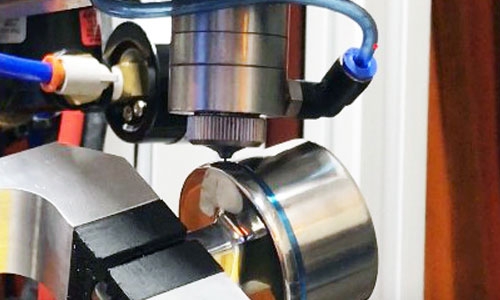Elija el método de aplicación de enmascarado adecuado para su proceso de acabado de superficies
Fabricantes que utilizan métodos de aplicación de enmascarado con cera, cinta o laca para proteger sus componentes de las agresiones Procesos de acabado de superficies Al igual que el granallado, el decapado con ácido, el enchapado y el anodizado, sabemos lo imprecisos y lentos que pueden ser. Algunos métodos requieren una aplicación manual y otros se basan en disolventes, lo que puede reducir la productividad y aumentar los desechos y la repetición del trabajo.
Los productos SpeedMask® se aplican rápidamente en una sola capa, se curan con luz visible/UV en segundos y se eliminan fácilmente mediante incineración o pelado. Ofrecen una alternativa a las técnicas de aplicación que requieren mucha mano de obra y una protección superior durante el procesamiento del tratamiento de superficies. Además de los beneficios de una aplicación rápida, una mayor velocidad y una eliminación sencilla, los enmascarantes SpeedMask son de un solo componente y no tienen disolventes añadidos, lo que los convierte en una opción ecológica para las empresas que se esfuerzan por cumplir con las iniciativas ecológicas. Muchos productos SpeedMask también están fabricados con materiales 100 % orgánicos.
Antes Decidir utilizar un enmascarado SpeedMask Es importante saber cómo aplicarlo para lograr el mejor resultado.
Aplicación semiautomática
Un proceso semiautomatizado utiliza máquinas (sistemas XYZ) programadas para seguir especificaciones y diseños exactos para dispensar enmascarantes con precisión sobre los componentes. Este método ayuda a mitigar el error humano y proporciona una cobertura de material uniforme para cumplir con los rigurosos requisitos de calidad.
- Diseñado para repetibilidad y precisión.
- Adecuado para aplicaciones de volumen medio.
- Incorporar en operaciones en línea con curado
- Superficies planas, incluidas las placas de circuitos impresos
Automatización completa con aplicación de celdas robóticas
La automatización completa con sistema de celdas robóticas se utiliza para la fabricación de precisión de gran volumen que puede requerir ajustes rápidos de procedimientos o cambios de diseño. El uso de válvulas dosificadoras automatizadas con brazos robóticos para dispensar material sobre superficies irregulares permite el enmascarado exacto de piezas con geometrías intrincadas y formas irregulares que serían difíciles de enmascarar manualmente con precisión. Este método puede ayudar a aumentar el rendimiento y reducir los problemas de calidad, como la repetición de trabajos y los desechos.
- Cobertura consistente en formas complejas para soportar una producción de alto volumen
- Máxima precisión en la colocación y cobertura del enmascarado.
- Programable para adaptarse a múltiples configuraciones de piezas.
Aplicación manual (aerosol |pulverizador|rociado y perlas)
Si bien los métodos de aplicación semiautomáticos y totalmente automatizados ofrecen una gran precisión y aumentan la eficiencia de fabricación, existen casos en los que se desea el enmascarado manual. Para la producción de bajo volumen donde se necesita flexibilidad y adaptabilidad o cuando las áreas de superficie grandes requieren cobertura y protección totales, puede justificarse la aplicación manual del enmascarado mediante aerosol |pulverizador|rociado o perlas de alta velocidad. Además, estos métodos de aplicación se pueden incorporar a los sistemas existentes para complementar el proceso, lo que proporciona cierto grado de automatización y personalización.
- Grandes superficies a enmascarar
- Admite producción de bajo volumen
- Se pueden incorporar válvulas dosificadoras manuales en el enmascarado celular robótico
Aplicación con cepillado
Este método de aplicación está diseñado para proyectos de nicho de bajo volumen y tiradas cortas, como prototipos o componentes que requieren retoques después de la reparación. Es importante recordar que el método de cepillado puede dar como resultado una cobertura de enmascarado desigual y puede no ser adecuado cuando se requiere una aplicación uniforme y precisa.
- Más adecuado para tiradas cortas, prototipos y retoques después de reparaciones o reelaboraciones.
- Es difícil lograr una cobertura uniforme
Ya sea que elija un método de enmascarado automático o manual, con Máscara de velocidad ¡Puedes aplicar, curar, tratar y quitar el enmascarado en cuatro sencillos pasos! Otras ventajas incluyen:
- Adaptarse a configuraciones complejas
- Se aplica mediante pulverización o aplicación manual.
- No se requiere inversión adicional para cambios de diseño o nuevos componentes para la aplicación del material.
- Después de un curado con luz adecuado, la eliminación del enmascarado deja las superficies libres de residuos.
- Las piezas enmascaradas están inmediatamente listas para la producción después del curado correcto.
- La fluorescencia para inspección de calidad está disponible en algunos productos.
Comuníquese con nuestro equipo de Ingeniería de aplicaciones para una consulta si está listo para discutir los requisitos de su proyecto.


